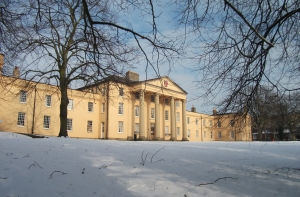 It is always exciting to see a book come together, and a key point in that process is receiving the first rough version of the dust jacket. Fountains and Water Culture in Byzantium will be published early next year by Cambridge University Press, rather too long after the wonderful event in Istanbul at which most of the papers were presented. The image on the cover is the top of a finial, perhaps the only surviving, functioning strobilion of the Middle Byzantine period, which can be found at the Great Lavra on Mount Athos. This comprises an eagle with outstretched wings, the uppermost figure – although it is possibly a later addition, and probably was once surmounted by a cross – a middle tier of eight creatures (zodia) – four serpents (or dragons) alternating with two winged lions and two griffins – projecting from a pomegranate or pine-cone, and a third, lower tier of four serpents (or dragons), each with a bull or ram in its mouth. The basin beneath the finial has been dated by an inscription to 1060. Another fountain with zodia is described by Manuel Philes in a poem that was formerly but incorrectly understood to describe the finial of the Lavra fountain:
It is always exciting to see a book come together, and a key point in that process is receiving the first rough version of the dust jacket. Fountains and Water Culture in Byzantium will be published early next year by Cambridge University Press, rather too long after the wonderful event in Istanbul at which most of the papers were presented. The image on the cover is the top of a finial, perhaps the only surviving, functioning strobilion of the Middle Byzantine period, which can be found at the Great Lavra on Mount Athos. This comprises an eagle with outstretched wings, the uppermost figure – although it is possibly a later addition, and probably was once surmounted by a cross – a middle tier of eight creatures (zodia) – four serpents (or dragons) alternating with two winged lions and two griffins – projecting from a pomegranate or pine-cone, and a third, lower tier of four serpents (or dragons), each with a bull or ram in its mouth. The basin beneath the finial has been dated by an inscription to 1060. Another fountain with zodia is described by Manuel Philes in a poem that was formerly but incorrectly understood to describe the finial of the Lavra fountain:
A Fountain in the Martyrium with the Cenotaph of Sts Florus and Laurus
A soulful serpent and an artful lion
Nature finds formed freely from stone
For if not yoked by the stiffness of stone
One would have seen the snakes before now slither
Supposing them alive and desiring to stir
But scared to death and in rigor mortis
Perhaps from fear of slipping
For the bold lions standing below
Have gaping mouths hurrying to feed.
An eagle-topped finial also graced an imperial fountain of the tenth century, as described by Theophanes Continuatus:
[Constantine VII] constructed a porphyry guardhouse in front of his bedchamber [in the Great Palace], creating a water receptacle that he encircled with marble columns of glistening smoothness. And what else did his noble-minded soul contrive? He set an eagle of silver on top of the water pipe, looking not straight ahead but off to the side, proudly rearing its neck after having caught its prey, and stifling the snake that was coiled around its feet.
Theophanes Continuatus records a further bronze fountain that stood in the middle of the Sigma, a semi-circular porticoed courtyard of the imperial palace. This, the so-called Mystic Fountain of the Triconch, was built for Theophilos in around 840, and it was to here that the factions were directed when their own fountains were moved. The Sigma fountain was, in fact, three fountains and a basin which was on the occasion of receptions ‘filled with pistachios, almonds and pine nuts, while spiced wine flowed from its [gilded] pine cone [finial] for the enjoyment of those attending’ including organists and performers in acrobatic displays staged for the emperor. The description of the waterworks continues,
Next to the fountain are set up steps of white Proconnesian marble and in the middle of the said steps is a marble arch supported on two columns as slender as reeds. There too, next to the long side of the Sigma have been erected two bronze lions with gaping mouths. These spouted water and flooded the entire hollow area of the Sigma, thus providing no small amount of pleasure.
The roar of the lions was now the roar of the water gushing through gaping mouths, while the hissing of serpents was the sound of water spraying through narrow jets.








You must be logged in to post a comment.